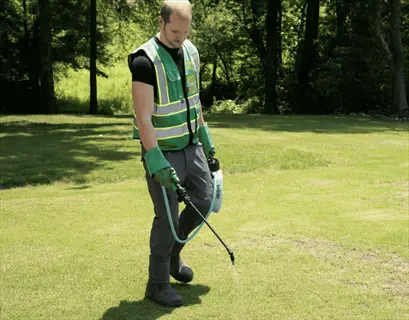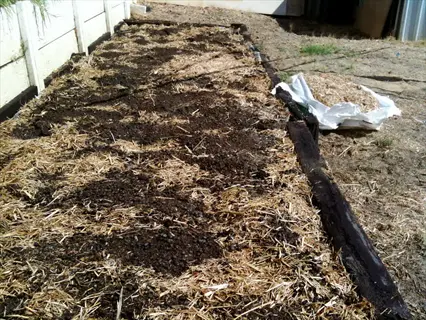Ultimate Berry Bush Care Guide for Home Gardeners

Written by
Tina Carter
Reviewed by
Prof. Martin Thorne, Ph.D.To ensure proper care of berry bushes, the first order of business is to confirm soil testing for acidity and to perform specific pH adjustments to the soil if necessary
Prune strategically each year to maximize berry production in plants by redirecting energy from vegetative to flowering and fruit-producing adults
Container planting for berry plants are best in 15-gallon pots and an acidic soil mix
Applying a deep layer of mulch each season will help protect soil temperature and inhibit weed growth in and around the berry bushes
Install bird netting before berries begin to fruit, as it can minimize up to 60% of the annual harvest time losses from birds
Once berry bushes are established, the use of deep watering weekly in the summer months and frost protection offers sound care for berry bushes year-round.
Article Navigation
Starting with berry bush care involves caring for perennial plants that provide a bounty of tasty fruits year after year, such as blueberries, raspberries, and blackberries. These resilient plants survive the winter and emerge ready for spring. You get fresh garden snacks. The plants are a beautiful addition to your outdoor areas.
When you grow berry bushes, you also support local wildlife. Birds, as well as bees and other pollinators, show up in your garden and help nature flourish. This guide describes common varieties of berries, including blueberries and their needs, as well as raspberry and blackberry options. If you're new to berry bushes, accessible directions are provided here. If you are a seasoned gardener, this can serve as a handy reference.
You'll learn practical techniques for each type of berry. The recommendations are derived from many years of collaboration with the berries. I share what works from my own space, where I grow different kinds of berries. We'll keep it simple and practical, not theoretical. The fruit from your berry garden is bountiful, and you will have it every year, season over season.
Planting Berry Bushes: Location and Soil Setup
The first step you need to take in choosing the right location for your berry bushes is to do pH testing (especially for blueberries). .Blueberries require acidic soil, with a pH range of 4.5-5.5. Fortunately, pH test kits are inexpensive and easy to use. If your soil is too alkaline, you can amend it with peat moss or sulfur to adjust the pH level. Adequate acidity will help the plants acquire nutrients more effectively.
Planting depth varies depending on the ground and containers. For garden beds, dig holes that are double the width of the root ball, but keep the crown at soil level. For containers, select pots that are at least 15 gallons in depth, and use potting soil with drainage holes to prevent water from collecting. Container plants dry out much faster, so be mindful of their moisture levels.
Steer clear of windy areas, as they can be detrimental to pollination. Bees can't work in heavy wind, impeding berry set. Plant along fences and shrubs to break the wind. Pay attention to poor drainage issues such as standing water or moss. These issues can lead to root rot. Add compost or other organic matter to the soil to improve drainage.
I learned the hard way when my first blueberry patch failed due to incorrect soil pH and poor drainage. Once I corrected both issues, the plants became very productive. If you start your berry bushes in suitable conditions, they will provide you with bountiful harvests.
Site Preparation
- Clear weeds and debris from 3-foot diameter area
- Test drainage: Dig 12-inch hole, fill with water, measure drainage rate
- Amend clay soils with 30% coarse sand for improved drainage
- Position windbreaks if average winds exceed 10 mph (16 km/h)
Planting Process
- Dig hole 3x wider than root ball, same depth as container
- Soak bare roots 1 hour before planting in water
- Tease circling roots gently to encourage outward growth
- Backfill with native soil mixed 1:1 with compost
- Water thoroughly: 2 gallons (7.5 liters) per plant initially
Soil Testing
- Use pH testing kit available at garden centers
- Collect samples from 4-6 inch depth at multiple locations
- Blueberries require acidic soil amendments like peat moss
- Most berries thrive in pH 5.5-6.5 with compost enrichment
Container Planting
- Select 12-16 inch diameter pot with drainage holes
- Use acidic potting mix for blueberries: peat-based blend
- Place pebbles at bottom for drainage before adding soil
- Water daily in summer: Check moisture at 2-inch depth
Post-Planting Care
- Apply 2-3 inch mulch layer avoiding stem contact
- Water every 2-3 days for first month after planting
- Install support structures before growth begins (trellises)
- Monitor for pests like aphids during establishment phase
Watering, Feeding, and Mulching Essentials
Watering is crucial when fruit begins developing. Plants require more moisture at this stage of their fruit development. During a heatwave, provide 1.5 inches of water per week. Always water in the early morning to minimize evaporation. Before watering, check the soil moisture by digging down two inches. Consistent moisture prevents fruit from cracking.
Feeding schedules vary between acid-loving berries, like blueberries, and berries at neutral pH. Blueberries require azalea fertilizer every spring and fall. Raspberries do best with a balanced 10-10-10 formula. Fertilizers should be applied in early spring when new growth appears. Do not feed after mid-summer to avoid harming new shoots.
The use of mulch thickness is an efficient way to regulate root temperature. Apply 2-3 inches of organic material around the plants. Straw or pine needles will insulate the roots from the heat. If mulch is applied properly, it will maintain a soil temperature around 10 degrees cooler in the summer. Mulch also prevents freeze-thaw damage in winter.
Overwatering can present with yellow leaves and slowed growth. These symptoms indicate the potential for root rot. Immediate action is needed to improve drainage in the affected area. I discovered this when my blackberries were affected. I fixed the drainage, and the plants were saved. The old saying, "An ounce of prevention is worth a pound of cure," applies here to berry bush maintenance.
General Watering Rules
- Provide 1 inch (2.5 cm) of water weekly during growing season
- Increase to 1.5 inches (3.8 cm) during fruit development and heatwaves
- Check soil moisture at 2-3 inch (5-7.5 cm) depth before watering
- Water early morning to reduce evaporation and fungal diseases
Container Watering
- Water daily in summer when temperatures exceed 80°F (27°C)
- Use finger test: Water when top 1 inch (2.5 cm) feels dry
- Ensure pots drain completely to prevent root suffocation
- Add water until it flows from drainage holes
Signs of Improper Watering
- Wilting leaves indicate immediate water need
- Yellow leaves suggest overwatering or poor drainage
- Fruit drop before ripening signals water stress
- Stunted growth shows chronic moisture issues
Seasonal Adjustments
- Reduce watering frequency in fall as plants enter dormancy
- Winter watering: Only during dry spells above freezing
- Spring ramp-up: Increase as new growth appears
- Monitor rainfall with gauge to supplement naturally
Water Quality Tips
- Use rainwater when possible for acidic-loving berries
- For hard water: Add 1 tbsp vinegar per gallon (15ml per 4L)
- Avoid softened water due to sodium content
- Test well water pH annually for mineral buildup

Organic Mulch
- Best materials: Straw, pine needles, shredded bark
- Apply 2-3 inch (5-7.5 cm) layer around plant base
- Replenish annually as material decomposes into soil
- Keeps soil cool and moist in summer months

Application Timing
- Ideal seasons: Late spring (after soil warms) or fall
- Refresh mulch before summer heat peaks
- Winter mulch: Apply after first hard frost
- Never apply against stems to prevent rot

Weed Suppression
- Effective barrier: Blocks 90% of weed germination
- Maintain weed-free zone 12 inches (30 cm) around plants
- Combine with cardboard for perennial weed control
- Reduces need for chemical herbicides

Temperature Regulation
- Summer protection: Keeps roots 10°F (5.5°C) cooler
- Winter insulation: Prevents freeze-thaw damage to roots
- Dark mulches warm soil faster in spring
- Light mulches reflect heat in hot climates

Nutrient Benefits
- Soil enrichment: Adds nitrogen as materials decompose
- Improves soil structure over time
- Attracts earthworms for natural aeration
- Use compost as mulch for dual feeding function
Pruning and Training Techniques
Pruning approaches for summer- to fall-bearing canes differ. Summer varieties, including traditional raspberries, produce crops on second-year canes. Following the harvest, prune the fruiting canes off to remove old wood. Fall-bearing types produce on new growth only. For best results, trim these to the crown in late winter.
Ensure that you sterilize your tools to prevent the spread of illness. Wipe pruners with 70% isopropyl alcohol in between plants. Keep your blades sharpened every month during active growth seasons. I always keep a disinfectant cloth nearby while I'm working. Keeping tools clean protects your whole berry patch from diseases.
Trellis systems differ based on the types of berries. Raspberries grow best on T-shaped trellises five feet tall. Blackberries will want multiple horizontal wires at different heights. Blueberries grow well in simple cages. Implement these systems early to prevent root damage later. If canes do not break and fruit weight is a factor, this is the difference.
Time the pruning with your local frost patterns. Cold areas prune after the last hard freeze in spring. Warmer areas allow for even earlier pruning. Always avoid pruning within four weeks of anticipated frost. New growth is easily killed after frost. This way, you are effectively protecting your plants from cold weather damage.
Tool Preparation
- Use bypass pruners for clean cuts on live wood
- Sterilize tools with 70% isopropyl alcohol between plants
- Sharpen blades monthly during active growing season
- Wear thick gloves to protect from thorny varieties
Basic Pruning Steps
- Remove dead/diseased wood first: Cut at 45° angle
- Thin crowded areas: Keep 4-6 strongest canes per plant
- Shorten remaining canes by 1/3 to encourage branching
- Clear all cuttings from base to prevent pest habitats
Cane Berry Pruning
- Summer-bearing: Prune after harvest, remove fruited canes
- Fall-bearing: Cut all canes to ground in late winter
- Blackberries: Tip-prune new canes at 3-4 feet height
- Raspberries: Remove weak shoots below 1/2 inch diameter
Blueberry Pruning
- Remove low-growing branches touching ground
- Cut oldest canes (over 6 years) at soil level
- Thin twiggy growth in center for light penetration
- Avoid pruning more than 20% of plant in one season
Timing Considerations
- Dormant pruning: Late winter before bud swell
- Summer pruning: After harvest for cane management
- Avoid pruning within 4 weeks of first frost
- Damaged wood: Remove immediately year-round
Seasonal Care Through the Year
Seasonal tasks correspond to berry developmental stages. In the spring, you need to prune, just after bud break, and put up bird netting as the flowers form. In the summer, water the fruits as they develop and keep an eye out for pests. Fall includes putting mulch down after the first frost. Winter entails protecting roots and checking for rodents.
Frost protection is different for container versus ground plants. Potted fruits must be wrapped in burlap above 20°F, and ground plants need a lot of mulch to insulate them. Container plants freeze faster, so you have to act sooner. I place pots against my house wall for more heat when it gets cold.
To protect birds in your fruit crops. Timing matched to fruiting cycles. For example, netting can be deployed once the berries have colored. Removable netting can be removed after harvest to avoid birds getting tangled. Reflective tape will work best during the peak ripening period. This minimizes losses and maintains the birds' viability. Your crop will not be attacked.
Adapt schedules according to local frost variations. For early frost zones, use winter mulch by mid-October. For late frost zones, mulch in mid-November. Know your USDA zone date. Southern gardeners prune earlier than northern ones. This uses regional timing to protect plants.
Spring Care (March-May)
- Prune dormant plants before bud break
- Apply balanced fertilizer as new growth emerges
- Install bird netting when flowers appear
- Watch for aphids on new shoots
Summer Care (June-August)
- Water deeply 2-3 times weekly during fruiting
- Harvest berries when fully colored and soft
- Remove diseased leaves to improve air circulation
- Apply second fertilizer to everbearing varieties
Fall Care (September-November)
- Reduce watering as plants enter dormancy
- Apply winter mulch after first frost
- Cut back spent canes on summer-bearing types
- Test soil pH and amend if needed
Winter Care (December-February)
- Protect roots with 4-6 inch mulch layer
- Wrap containers in burlap below 20°F (-7°C)
- Prune on mild days above freezing
- Check rodent protection around bases
Year-Round Monitoring
- Inspect weekly for pests/diseases
- Weed 12-inch radius around plants
- Support heavy fruit loads with ties
- Document growth for future adjustments
Pest Management and Troubleshooting
Start with non-chemical solutions to manage pests. Pick beetles off your plants in the morning when they are slow. Spray aphids with plain water or insecticidal soap. Bring in ladybugs to prey on your mites. These methods will enable you to eat your berries while protecting the beneficial insects in your garden.
Recognize pests according to plant symptoms. For example, chewed leaves tell me caterpillars or beetles are present. The sticky sap indicates that aphids are present. Pecked fruits indicate birds. Holes inside berries indicate fruit worms. I check plants weekly throughout the growing season. Early identification makes control easier and much more effective.
Distinguishing between bird damage and insect damage. Birds leave a clean pecking mark on ripe berries. Insects' damage is characterized by irregular holes with frass inside. Birds are active during the day. Insects are mainly nocturnal feeders. Use nets for birds and traps for insects.
Companion plants that naturally deter pests. Garlic keeps aphids away from raspberries. Marigolds repel nematodes from blueberries. Chives, when grown near strawberries, deter mites. I always keep these companion plants as borders around my berry patch. They definitely reduce pest pressure.
I lost half of my blueberries to birds once; guess I learned! Now I put up nets when berries are just starting to color! Most insects are taken care of by companion plants. Your plants are kept healthy and happy without the use of chemicals. And you're enjoying chemical-free harvests each season.
Birds
- Signs: Pecked fruits, missing berries
- Prevention: Install netting before fruit ripens
- Natural deterrents: Reflective tapes, fake predators
- Timing: Cover plants during fruiting season
Aphids/Spider Mites
- Signs: Curled leaves, sticky residue, webbing
- Treatment: Spray with water blast or insecticidal soap
- Beneficial insects: Introduce ladybugs or lacewings
- Companion plants: Plant garlic or chives nearby
Japanese Beetles
- Signs: Skeletonized leaves, visible metallic beetles
- Manual removal: Hand-pick in early morning
- Traps: Place away from plants to lure beetles
- Natural spray: Neem oil applications at dusk
Fruit Worms
- Signs: Holes in berries, frass inside fruits
- Prevention: Remove fallen fruit promptly
- Biological control: Use Bacillus thuringiensis (BT)
- Barrier method: Row covers during bloom
Powdery Mildew
- Signs: White powder on leaves/stems
- Prevention: Improve air circulation via pruning
- Treatment: Baking soda spray (1 tbsp per gallon water)
- Resistant varieties: Choose mildew-tolerant cultivars
5 Common Myths
Full sun is required for all berry bushes to produce fruit well throughout the growing season.
Many types of berries grow in full sun, but some types like beautyberries and salmonberries can produce in partial shade. These shade tolerant varieties still produce crops in a garden setting in less than 4 hours of direct sunlight. Since shade tolerant varieties yield well in dappled light conditions, these are good options for plantings in the garden with partial sun, such as north planting or a shady garden.
Pruning berry crops decreases the total yield of fruit and should be avoided at all costs.
Selective pruning significantly increases berry production by concentrating the plants energy in the production of fruit and not as excessive foliage. The removal of old, non-productive canes allows more air to circulate through plants and reduces the incidence of disease. Pruning also encourages new growth of fruiting wood. Well-pruned berry bushes produce more fruit to the overall capacity of unpruned bushes due to better access of light to fruitful sites in the structure of the plant and a greater allocation of resources.
Berry bushes grown in containers will not ever produce crops comparable to growing berries in the ground.
In today's containers gardening practices, berry bushes are grown in the containers and can perform and produce well if the proper conditions are provided. With the ideal container type (15 gallon/57 liter minimum for most types), using a custom soil mix for blueberries (high acidity based soil mix) and watering the plants consistently, potted berry plants can be grown to yields similar to field grown plants. Many gardeners use a container system because its easier to manage nutrient levels and pest levels while continuing to grow berries.http://www.oregonstate.edu/dept/extension/berry.pdf.
Berry bushes naturally draw damaging pests that are likely to harm the garden plants that are nearby.
Some varieties of berries actually can repel common garden pests due to some of the natural biochemical compounds contained in their leaves and stems. Beautyberries contain callicarpenal, a compound that is known to repel ticks and mosquitoes, while raspberry canes expel floral aromatics that confuse the navigation of aphids. When planted as companion species and in the right locations, berry bushes can form a protective barrier of companion species that reduces pest pressure on the vegetables and flowers she is planting, rather than increasing the risk of infestation.
Berry plants necessitate daily monitoring and an extensive care regimen to maintain plant health and production.
Professional growers have invested time and energy into creating resilient berry cultivars that require only seasonal maintenance. Plants that are already established still need watering once a week, deeply, if there is an extended dry spell, fertilizing once a year in the early spring (winterizing grasses, sorrel, etc., is also recommended), and renewing and enriching the mulch seasonally. If the plants are given reasonable consideration of where to plant them and how to prepare the soil initially, berry plants can flourish with minimal intervention when established, with generous harvests over the years without requiring a gardener to visit every day.
Conclusion
Berry growing is an attainable option for everyone, regardless of experience. You start small with just one or two plants. Then, with the general care guidance, you build self-assurance from season to season. There are even balcony gardeners with container varieties. You will realize homegrown berries -fresh!
Properly maintained berry plants provide long-term benefits other than harvesting. Healthy bushes add beauty (added curb appeal) to your landscape for years to come. They provide habitat for pollinators for seasons and seasons to come. The blueberry patch I have been harvesting from for ten years is still going strong. When plants are properly cared for, they can recover more quickly from weather fluctuations.
Explore the berry varieties. In northern zones, try cold-hardy cranberries. In southern states, plant heat-tolerant blackberries. I like to try one new type each year. Salmonberries surprised me last summer with their prolific yield.
Look forward to the simple pleasure of gathering ripe berries, and imagine your bowl full of fruit warmed by the sun. Give any extras to neighbors, or freeze them for wintertime. All your effort comes down to these little treasures. Then, every spring, the cycle starts over.
External Sources
Frequently Asked Questions
How do I care for a salmonberry plant?
Salmonberries thrive in partial shade with moist, humus-rich soil. Plant them where they'll get morning sun and afternoon shade. Water deeply during dry periods and apply organic mulch annually. Prune after fruiting by removing old canes to encourage new growth.
What's the best way to care for beautyberry bushes?
Beautyberries adapt well to various conditions but prefer slightly acidic soil. Key care includes:
- Prune in late winter before new growth appears
- Water weekly during drought conditions
- Apply balanced fertilizer in early spring
- Use mulch to retain moisture and suppress weeds
Why isn't my berry bush flowering?
Lack of flowers typically indicates insufficient sunlight, improper pruning, or nutrient imbalance. Ensure your plant gets adequate direct sunlight daily. Avoid high-nitrogen fertilizers that promote leaves over blooms, and prune at the correct seasonal timing for your berry variety.
Can I use coffee grounds for fertilizing berry plants?
Yes, coffee grounds benefit acid-loving berries like blueberries when used properly:
- Mix into topsoil as nitrogen-rich amendment
- Combine with compost to avoid soil compaction
- Apply sparingly to maintain proper pH balance
- Avoid direct contact with plant stems
How should I prepare berry bushes for winter?
Winter preparation involves protecting roots from freezing temperatures. Apply thick mulch after first frost, wrap container plants in burlap, and install windbreaks for exposed locations. Prune only during mild spells and monitor for rodent damage near plant bases.
What companion plants help berry bushes thrive?
Strategic companion planting enhances berry growth and deters pests:
- Garlic and chives repel aphids naturally
- Lupines fix nitrogen in surrounding soil
- Marigolds deter nematodes and beetles
- Avoid planting near walnut trees which inhibit growth
How often should berry bushes be watered?
Watering frequency depends on season and growth stage. During fruiting, water deeply 2-3 times weekly, ensuring moisture reaches root zones. In dormancy, reduce to weekly watering. Always check soil moisture before watering and adjust for rainfall and temperature conditions.
Why are my berry plant leaves turning yellow?
Yellow leaves typically indicate nutrient deficiencies or watering issues. For blueberries, acidic soil imbalance often causes chlorosis. Other causes include overwatering leading to root suffocation, or iron deficiency. Test soil pH and adjust watering practices accordingly.
When is the best time to prune different berry varieties?
Pruning timing varies significantly by berry type:
- Summer-bearing raspberries: After harvest completes
- Fall-bearing varieties: Late winter before growth resumes
- Blueberries: Late winter during dormancy
- Gooseberries: Early spring before buds swell
How do I protect berries from birds and pests?
Implement protective measures before fruiting begins:
- Install bird netting when berries start forming color
- Use reflective tape to deter birds visually
- Apply row covers for insect protection during bloom
- Encourage natural predators like ladybugs for aphid control

